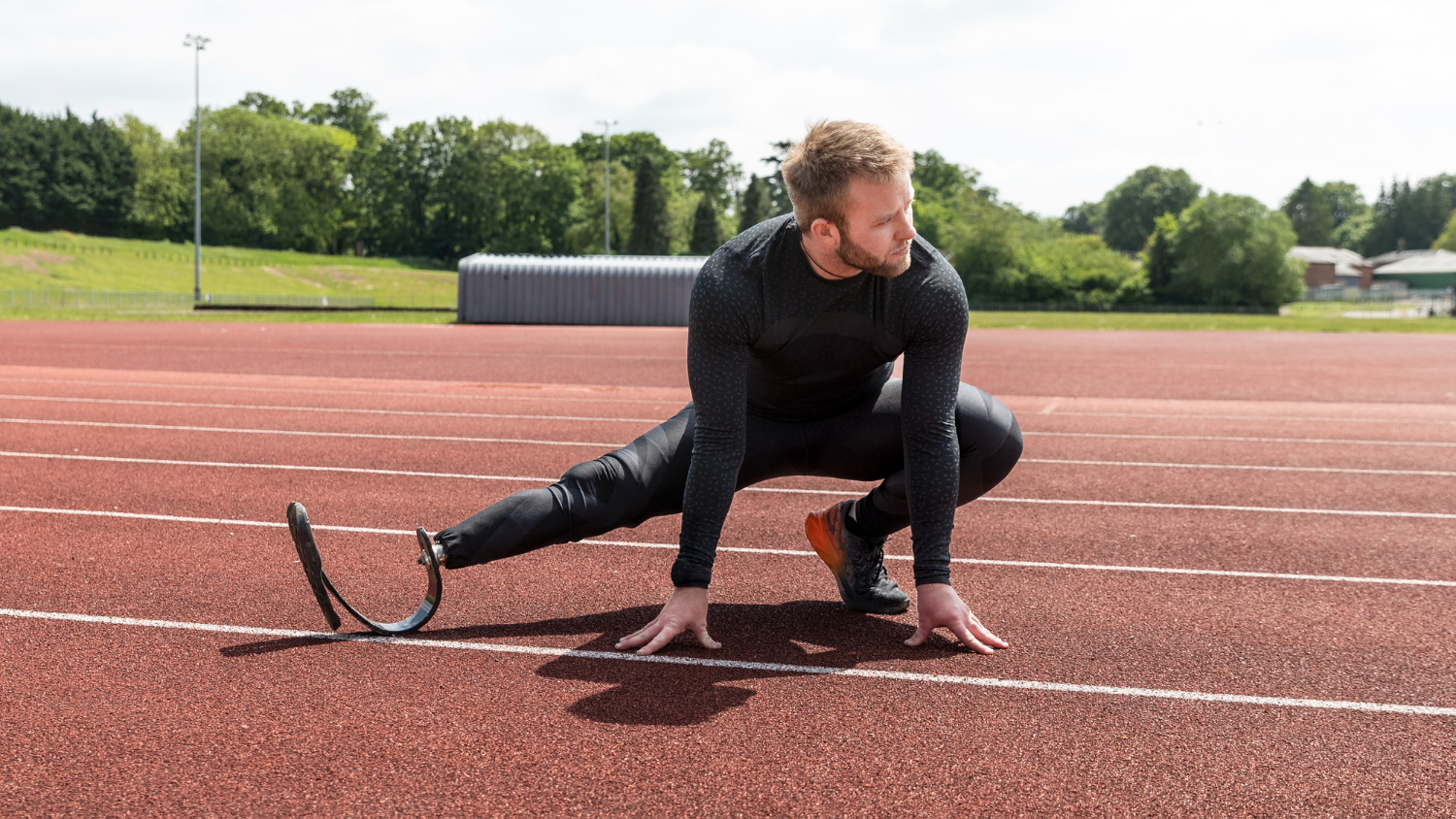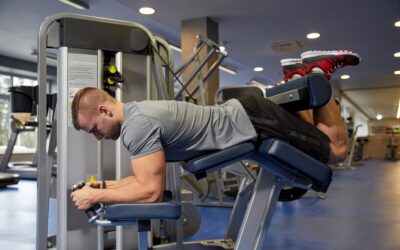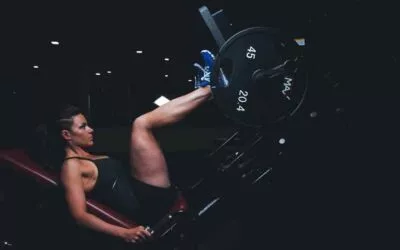🎯 Key Points
- Improves flexibility and range of motion in the hips and groin.
- Helps prevent injuries by increasing muscle elasticity.
- Enhances overall athletic performance by improving agility and speed.
- Can alleviate lower back pain by releasing tension in the hip flexors.
- Promotes better posture and alignment by stretching the hip flexors and hamstrings.
Hurdle stretches are a form of stretching exercise that specifically target the muscles in the lower body, particularly the hamstrings and hip flexors. This type of stretch involves sitting on the ground with legs extended and then lifting one leg over an imaginary hurdle while keeping the other leg straight. Hurdle stretches can be performed in various ways, each offering unique benefits and targeting different muscle groups.
In this article, we will explore the different types of hurdle stretches, their benefits, and provide a step-by-step guide on how to perform them correctly. Whether you are an athlete looking to improve flexibility or simply seeking to increase mobility in your lower body, hurdle stretches can be an excellent addition to your stretching routine.
Muscle worked During Hurdle Stretches.
Hamstrings: Hurdle stretches primarily target the hamstrings, which are the muscles located at the back of the thigh.
Hip Flexors: Hurdle stretches also work the hip flexor muscles, which are responsible for lifting the leg and bending the hip joint.
Glutes: The gluteal muscles, including the gluteus maximus, medius, and minimus, are engaged during hurdle stretches to stabilize the hip and pelvis.
Quadriceps: While not the primary focus, hurdle stretches also involve the quadriceps muscles located at the front of the thigh, as they assist in flexing the hip and extending the knee.
Calves: Finally, the calf muscles, including the gastrocnemius and soleus, are indirectly worked during hurdle stretches as they help to stabilize the ankle joint.
Benefits of Hurdle Stretches.
This particular stretch offers numerous benefits that can enhance flexibility, improve athletic performance, and contribute to overall physical well-being. Here are eight key advantages of incorporating hurdle stretches into your exercise routine:
1. Improved Flexibility.
Hurdle stretches target the muscles in the legs, hips, groin, and lower back, promoting increased flexibility in these areas. Regularly performing hurdle stretches can help lengthen the muscles and improve range of motion.
2. Enhanced Athletic Performance.
By increasing flexibility, hurdle stretches can improve athletic performance in various sports and physical activities that require leg mobility and agility. This stretch can help athletes achieve more significant strides, higher jumps, and more efficient movements.
3. Injury Prevention.
The flexibility gained from hurdle stretches can help prevent injuries, particularly in the lower body. By improving muscle suppleness and joint mobility, this stretch reduces the risk of strains, sprains, and muscle tears during physical activities.
4. Reduced Muscle Soreness.
Engaging in hurdle stretches after a workout or intense physical activity can help alleviate muscle soreness and stiffness. Stretching the legs and promoting blood flow to the muscles aids in the removal of metabolic waste products, reducing post-exercise discomfort.
5. Improved Posture.
Hurdle stretches engage the muscles responsible for maintaining proper posture, such as the lower back and hip flexors. Regular practice of this stretch can help correct imbalances and promote a more upright posture, reducing the risk of back pain and improving overall body alignment.
6. Increased Blood Circulation.
Dynamic stretches like hurdle stretches promote blood flow throughout the body, including the legs. This enhanced circulation delivers oxygen and essential nutrients to the muscles, facilitating their recovery and promoting tissue repair.
7. Mental Relaxation.
Engaging in hurdle stretches can provide a mental break and promote relaxation. The rhythmic nature of this stretch can help calm the mind, relieve stress, and improve focus and concentration.
8. Versatility.
Hurdle stretches can be modified to target specific muscle groups or increase or decrease the intensity depending on individual needs. This versatility allows individuals to customize their stretching routine and cater to their unique flexibility goals.
| 💡 Tips FreakToFit.com Incorporating hurdle stretches into your exercise routine can yield significant benefits, ranging from improved flexibility and athletic performance to injury prevention and mental relaxation. Whether you are an athlete looking to enhance your performance or someone seeking to improve overall physical well-being, adding hurdle stretches to your routine can be a valuable addition. |
How To Do Hurdle Stretches?
Here are the steps to effectively perform hurdle stretches:
Step 1. Warm up.
Before starting any stretching routine, it is crucial to warm up your body. Engage in light cardio exercises such as jogging or jumping jacks for 5-10 minutes to increase blood flow and raise your body temperature.
Step 2. Choose the right hurdle height.
Select a hurdle height that is appropriate for your current flexibility level. Beginners may start with a lower hurdle, gradually progressing to a higher one as their flexibility improves.
Step 3. Place the hurdle.
Position the hurdle parallel to your body, ensuring that it is stable and secure. It’s important to have enough space around the hurdle to perform the stretches safely.
Step 4. Step over the hurdle.
Stand beside the hurdle, placing one foot on the ground and the other on top of the hurdle. Your body should be facing forward, and your feet should be in line with your hips. Keep your leg extended and straight.
Step 5. Hurdle stretch.
Slowly lower your body by bending at the hips, keeping your back straight and your chest up. Reach towards your foot with both hands, aiming to touch your toes or as close as possible. Hold this stretch for 15-30 seconds while focusing on deep, controlled breathing.
Step 6. Switch sides.
After completing the stretch on one side, carefully lift your leg off the hurdle and repeat the same process on the opposite side. It’s crucial to maintain proper form and alignment throughout the stretch.
Step 7. Gradually increase difficulty.
As your flexibility improves, increase the height of the hurdle or try more challenging variations of the stretch. For example, you can add a twist to the stretch by reaching towards the opposite foot instead of the one on the hurdle.
Step 8. Repeat and alternate.
Perform the hurdle stretches for each leg, alternating sides until you feel adequately stretched on both sides of your body. Remember to take your time and listen to your body’s limits to avoid overstretching or causing injury.
Step 9. Cool down.
After completing the hurdle stretches, take a few minutes to cool down and relax your muscles. Engage in light stretching or foam rolling to prevent any post-workout stiffness or soreness.
| 💡 Tips FreakToFit.com Incorporating hurdle stretches into your regular routine can significantly enhance your performance and help you maintain optimal flexibility. Remember to consult a professional or a coach if you have any concerns or specific goals related to your training. |
Types of Hurdle Stretches.
Here are several types of hurdle stretches that can be incorporated into a stretching regimen:
1. Single Leg Hurdle Stretch.
In this stretch, one leg is placed on a hurdle or raised platform while the other leg remains on the ground. The leg on the hurdle is flexed, allowing a deep stretch in the hip flexors and quadriceps.
2. Lateral Hurdle Stretch.
This stretch involves placing one leg on a hurdle or raised platform and laterally extending it to the side. This motion targets the inner thigh muscles and improves hip mobility.
3. Forward Hurdle Stretch.
With this stretch, one leg is placed on a hurdle or raised platform, and the upper body is then lowered forward, reaching towards the leg on the hurdle. This stretch effectively targets the hamstrings and lower back.
4. Hurdle Calf Stretch.
In this stretch, both legs are extended over a hurdle or raised platform, and the heels are lowered towards the ground. This exercise elongates and relaxes the calf muscles.
5. Hurdle Hip Flexor Stretch.
This stretch involves kneeling down with one leg in front, placing the foot on a hurdle or raised platform, and gently leaning forward. It provides a deep stretch in the hip flexor muscles.
6. Hurdle Groin Stretch.
With one leg extended over a hurdle or raised platform and the opposite leg bent at the knee, this stretch targets the groin area and inner thigh muscles.
7. Hurdle Hamstring Stretch.
In this stretch, one leg is placed straight on a hurdle or raised platform, and the upper body is then lowered forward, reaching towards the foot on the hurdle. This exercise effectively stretches the hamstrings.
8. Hurdle Quad Stretch.
This stretch involves standing close to a hurdle or raised platform, bending one leg, and lifting the foot behind, grabbing it with the hand on the same side. This stretch primarily targets the quadriceps muscles.
| 💡 Tips FreakToFit.com Incorporating these various hurdle stretches into a regular stretching routine can help increase flexibility, improve mobility, prevent injuries, and enhance overall performance in various physical activities. |
Additional Tips For Hurdle Stretches.
1. Warm-up properly before attempting any hurdle stretches. This can include light jogging, dynamic stretches, or jumping jacks to increase blood flow and loosen up the muscles.
2. Start with a low hurdle height and gradually increase it as your flexibility improves. It’s important not to push yourself too hard too quickly, as this can lead to injury.
3. Use proper form and technique. When performing hurdle stretches, make sure to keep your back straight, engage your core, and focus on stretching the targeted muscles. This will help you maximize the benefits of the stretch and avoid unnecessary strain.
4. Be consistent with your stretching routine. In order to see progress and increase flexibility, it’s important to stretch regularly. Aim for at least three times a week, or more if possible.
5. Incorporate other stretching exercises. While hurdle stretches are great for targeting specific muscles, it’s beneficial to include a variety of stretching exercises to work different muscle groups. This will help improve overall flexibility and prevent muscle imbalances.
6. Listen to your body. Pay attention to any discomfort or pain during the stretch. If something doesn’t feel right, adjust or modify the stretch accordingly. It’s important to always prioritize your safety and avoid pushing yourself too far.
7. Don’t forget to cool down. After completing your hurdle stretches, take a few minutes to cool down and perform static stretches. This will help prevent muscle soreness and promote recovery.
8. Stay hydrated. Drinking enough water throughout the day is crucial for maintaining overall health and flexibility. Proper hydration supports muscle function and prevents cramping.
9. Consider seeking professional guidance. If you’re new to hurdle stretches or have any specific concerns or limitations, it might be helpful to consult with a fitness professional or physical therapist. They can provide personalized advice and guidance to help you safely and effectively incorporate hurdle stretches into your routine.
10. Stay patient and consistent. Flexibility takes time to develop, so don’t get discouraged if you don’t see immediate results. Stay committed to your stretching routine, and over time, you’ll notice improvements in your range of motion and overall flexibility.
Hurdler stretch alternative.
There are several alternative stretches that can be performed as an alternative to the hurdler stretch. These stretches target similar muscle groups and provide similar benefits for flexibility and mobility. Here are a few options:
1. Seated Forward Fold.
Sit on the ground with your legs extended in front of you. Slowly reach forward, aiming to touch your toes or as far as you can comfortably reach. Keep your back straight and focus on lengthening your hamstrings and lower back.
2. Standing Hamstring Stretch.
Stand with your feet hip-width apart. Extend one leg straight in front of you, keeping it parallel to the ground. Hinge forward from your hips, reaching towards your extended foot. Keep your back straight and engage your core. Repeat on the other leg.
3. Lunge with Hamstring Stretch.
Start in a lunge position with your right foot forward and your left knee on the ground. Slowly shift your weight back, straightening your front leg while keeping your toes pointed upwards. Lean forward slightly to deepen the stretch in your hamstring. Repeat on the other side.
4. Butterfly Stretch.
Sit on the floor and bring the soles of your feet together, allowing your knees to fall out to the sides. Hold onto your ankles or feet and gently press your knees towards the ground. This stretch targets the inner thighs and hips.
5. Standing Quad Stretch.
Stand tall and hold onto a support if needed. Bend one knee and grab your ankle or foot behind you, pulling it towards your glutes. Keep your standing leg straight and engage your core to maintain balance. Repeat on the other side.
| 💡 Tips FreakToFit.com Remember to perform these stretches in a controlled manner, avoiding any pain or discomfort. It is essential to warm up before stretching and consult with a healthcare professional if you have any pre-existing conditions or injuries. |
Frequently Asked Questions.
The hurdler stretch can potentially be bad for the knee if not done with proper form or if there are pre-existing knee issues.
Bottom Line.
Hurdle stretches are a beneficial exercise for improving flexibility and mobility in the lower body. By targeting the muscles in the hips, hamstrings, and calves, hurdle stretches can help increase range of motion and prevent injuries. Whether you are an athlete looking to improve performance or someone seeking to enhance overall flexibility, incorporating hurdle stretches into your routine can provide numerous benefits. Remember to start with proper warm-up and gradually increase the intensity and duration of the stretches to avoid injury. With consistency and proper form, hurdle stretches can be an effective addition to any stretching routine.

 Workout
Workout
 Meditation
Meditation


 Stories
Stories


 Podcast
Podcast E-book
E-book




















